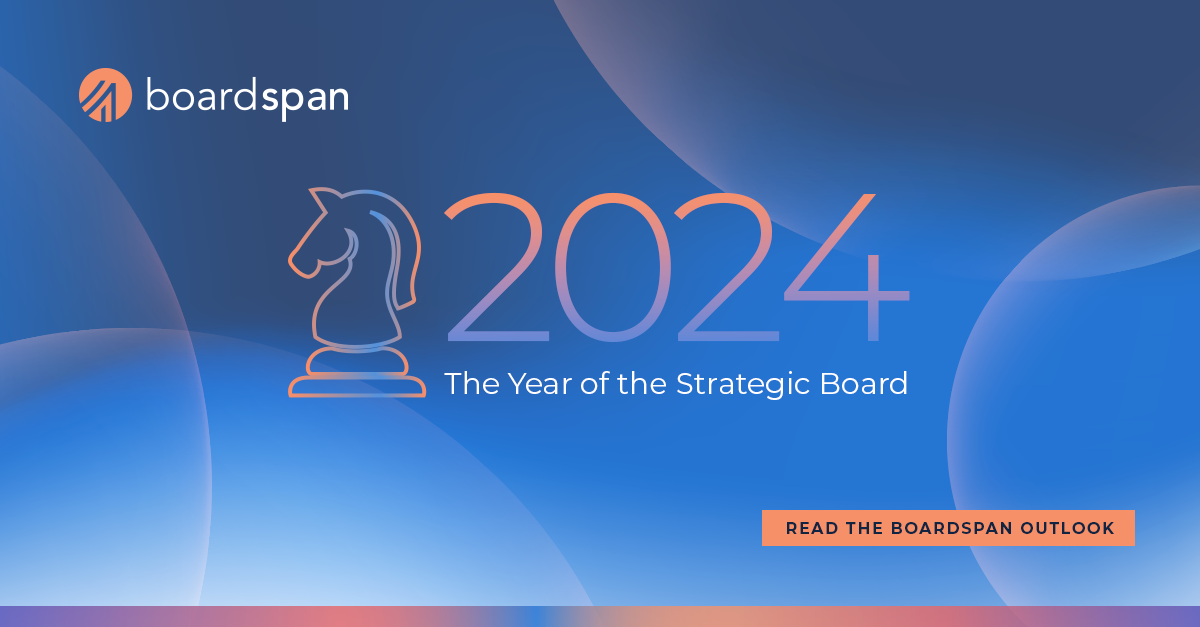AI and Governance: Five Questions Answered

Our September webinar, AI and Governance: What Every Board Member Needs to Know, was full of valuable advice for boards on how to govern artificial intelligence in this sometimes vague, often changing, and always fascinating landscape.
But Boardspan CEO Abby Adlerman and Dr. Ayesha Khanna, one of the world’s leading experts on the intersection of AI and business, explored all aspects of AI during the hour, and could have easily spoken for another hour on the impact of AI on the boardroom and the rest of the world.
Ayesha Khanna brings decades of experience in smart technology and AI in particular to the table, including her role as CEO of Addo.ai, her work advising global governments and corporations on emerging technology, two books (and a third on the way), and degrees from Harvard, Columbia, and the London School of Economics with a concentration on information systems and smart technology. She combines an intelligent AI framework, real world experience, and a commonsense perspective that helps clarify and solidify AI strategy.
Board members got answers to a number of AI-related questions that we at Boardspan hear asked often. Below, we look at five of them.
Question 1: Where will business see the greatest gains from AI?
When looking at real business value and transformation, there are a few key levers that AI can pull to increase revenue, your addressable market, and operational efficiency.
Personalization
AI opens the door for more personalized services, in retail, financial services, the healthcare journey, and more verticals. For example, generative AI now enables companies to better understand and then communicate with the end customer through natural language, resulting in valuable interactions.
Productivity
AI personalization will change the way we do business. But in the long run, organizations will see the greatest impact is in operational efficiency and making various assets more productive. You can divide these assets into three categories:
- Human capital: Humans can already increase productivity by automating tasks. But AI can also make humans more productive by adding assistance in the form of chatbots and generative AI tools.
- Machines: AI can make your machine hardware–everything from engines to supply chain mechanics–more streamlined and productive, increasing energy efficiency, scheduling maintenance, and more.
- Existing IT systems: Technology systems can already be made more efficient with automation, but now they can become intelligent. Eventually, we will have one technology’s AI communicating with another technology’s AI to chain tasks together.
We are just starting to see human productivity gains, but where the greatest gains will happen is when machines and IT systems become more efficient and intelligent. Boards should target these four areas, identify the challenges in each one, and think about how AI can make an impact.
Learn more about the AI productivity playbook:
Question 2: How can boards best oversee AI strategy and add the most value?
Maybe company leadership has already come to you with an AI strategy. Or perhaps the strategy is being formulated right now. That strategy should lay out a roadmap and an approach. The AI strategy should have some key characteristics:
- It should address the competitive landscape regarding AI
- It should clearly layout the company’s aspirations and challenges
- The AI strategy and road map should always be closely linked to business outcomes: No AI for AI’s sake.
It’s the board’s job to ask questions, challenge ideas, and offer advice to ensure that AI is truly adding value.
How to help define AI strategy:
Question 3: What is the best AI risk management framework?
The AI risk management framework is not unique to AI. Boards should follow the best practices for any risk management framework:
- With people, ensure that proper security, policies, and procedures are in place, and they are trained to watch for risk factors in AI models and output.
- For processes, ensure that they are well monitored and tested regularly. AI operations tools already exist that can help ensure proper security.
- Regarding technology, consistently monitor models for vulnerabilities. As with processes, there are existing tools and risk management frameworks that can perform this task.
- Finally, a solid communication strategy and plan is essential for transparency about AI and, if necessary, crisis management.
As with any risk management strategy, the board should ensure that executive leadership is reporting regularly on these pillars.
The importance of communication in the age of AI:
Question 4: What are the specific AI risks that boards need to watch for?
When you are overseeing AI and helping ensure that the technology safe and in line with company ethics and values, there are four fundamental things to watch for:
- First, the board wants to ensure that there is no inherent bias in the AI, for example, showing discriminatory preferences.
- The board needs to be sure that the AI is not manipulative in any way, encouraging people to do unscrupulous things, such as overspending.
- The board also needs to ensure that there is proper cybersecurity in place to prevent data poisoning and other types of breaches.
- Finally, the board needs to stay on top of compliance as worldwide regulation evolves, keeping in mind that different global regions may have different requirements.
Data poisoning and how to prevent it:
Question 5: How much AI expertise does the board need?
When it comes to AI, directors, like many people, need to become students again. But how much expertise is enough on the board? Many of us aren’t sure how technical to get in our learning, and whether it’s better to have one deep expert or many people with a working knowledge of AI.
Approach AI expertise in two ways
Both types of expertise are valuable on a board. First, it’s good for a board to have at least one director who is well versed in artificial intelligence. That person can serve as the AI expert for oversight and a source of knowledge for other board members, helping the group think critically about the role of AI in the organization.
But it’s also important for non-experts to get some basic training on the fundamentals of artificial intelligence. That training doesn’t have to go deep on technology, but it should at the least include the components of AI, types of AI, and its various uses.
How to get into the “AI Mindset”:
Watch the whole webinar to learn more
These five things are just some of the many AI topics covered in the webinar. You can watch the entire webcast to hear about:
- What AI is and isn’t
- How the regulatory environment will evolve
- Real-life examples of AI successes and pitfalls
- And more




